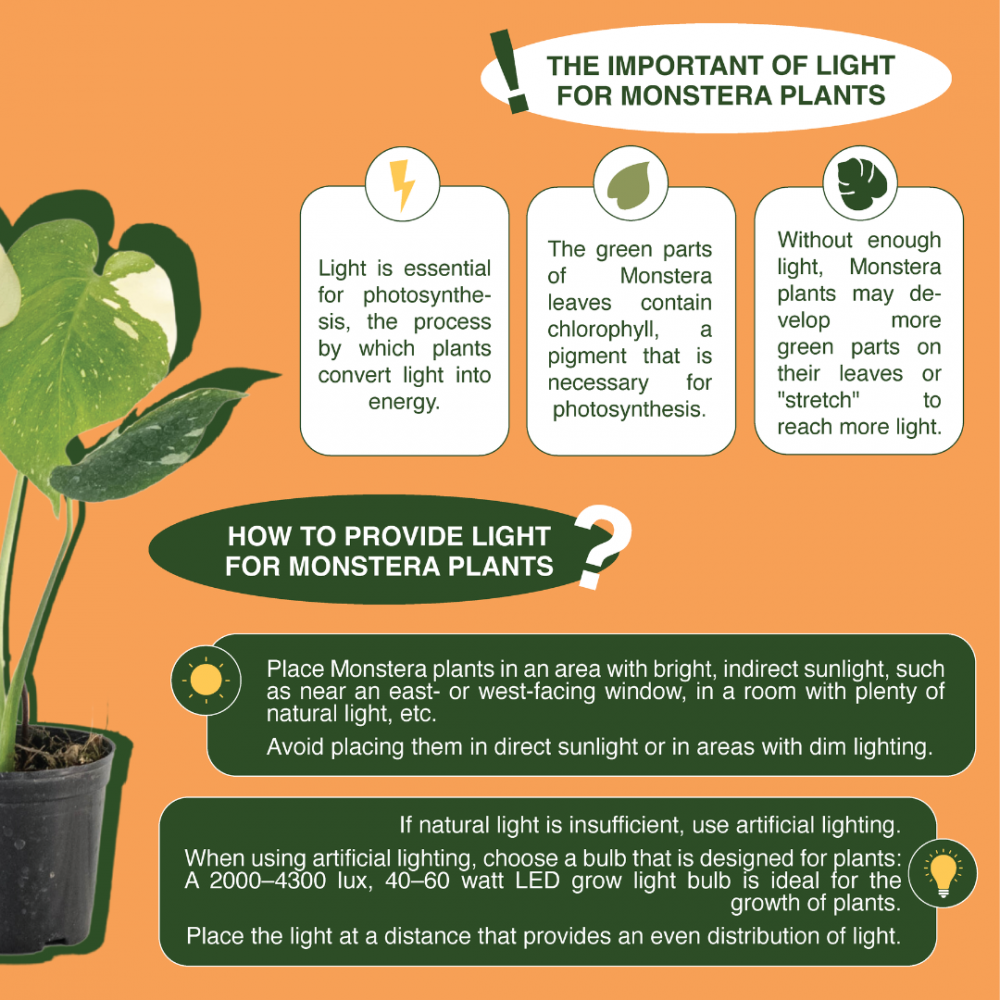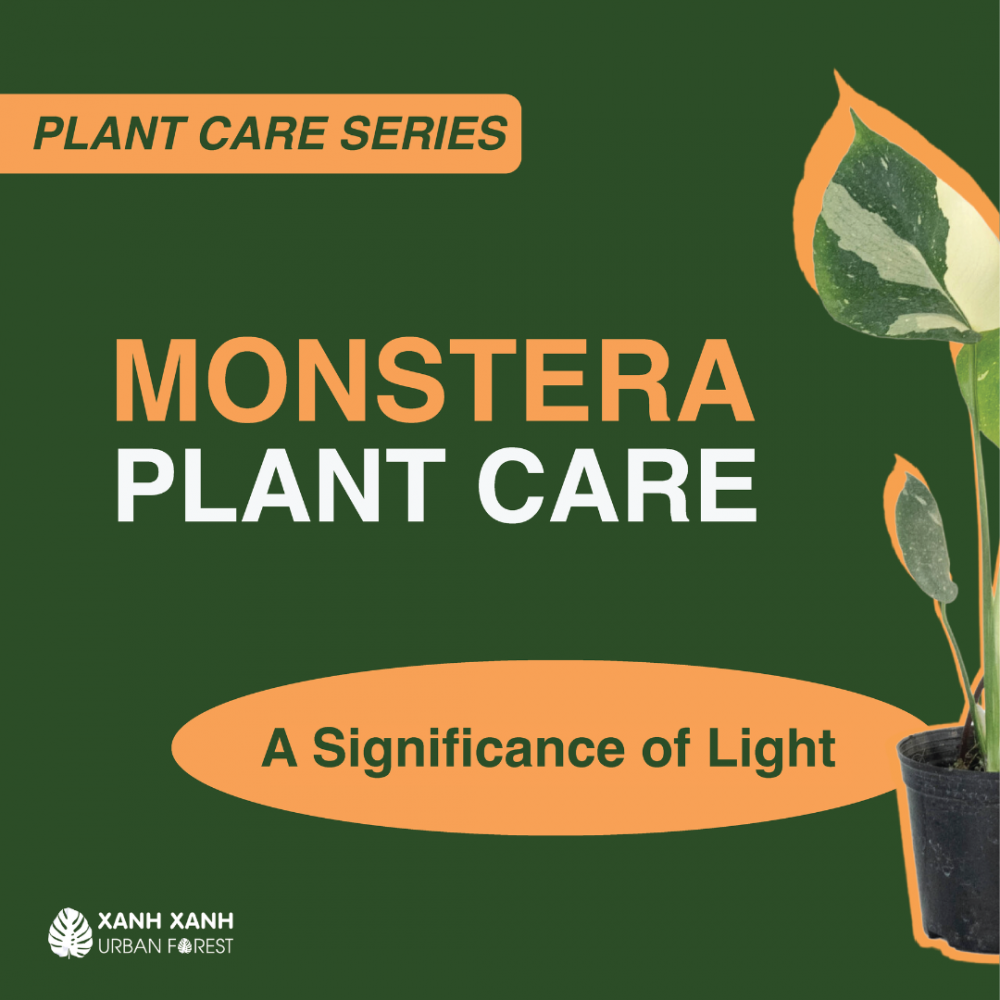Table of Contents
1. Introduction to the Monstera Plant
One of the most appreciated unusual plants is the Monstera, which is adored for its untamed beauty and low maintenance requirements. The Monstera plant, a variety native to Central and South America, is widely recognized for its significant, confusing leaves that have an expansive variety of shapes.
2. The Importance of Light for the Monstera Plant
Analyzing the Structure of the Monstera Plant
Before delving into why light is essential for this plant, it is essential to understand the structure of this plant. This plant typically consists of two main sections on its leaves: one lushly green and the other a yellow part. In photosynthesis, a process by which plants use light to produce energy for themselves, the green portion of the leaves actively contributes. The yellow portion of the leaf, in contrast, does not take part in the process because it lacks chlorophyll, a pigment necessary for photosynthesis.

The Role of Chlorophyll in Photosynthesis
Photosynthesis, the process by which plants convert light energy into chemical energy, is possible due to the presence of the photosynthetic pigment chlorophyll, which is found in plant leaves. When light strikes a plant leaf, chlorophyll initiates the photosynthesis process, which produces glucose and the energy the plant needs to survive. This demonstrates the crucial part that the leaf’s green half plays in this process.
3. The Effects of Insufficient Light
If your Monstera does not receive adequate light, it adapts to optimize its survival and development.

Increased Growth of Green Parts
When light is lacking, this plant will develop more green parts on its leaves. This maximizes its ability to capture the available light for photosynthesis. This natural reaction aids the plant’s survival in conditions of light scarcity.
The “Stretching” Phenomenon of the Plant
Insufficient light can also lead to the “stretching” phenomenon in your plant. This means the plant will elongate the distance between its leaves to achieve better exposure to light. Although an undesirable outcome, it is the plant’s way of maximizing benefits from limited light sources.
4. Providing Light for the Monstera Plant
To ensure the robust growth and optimal beauty of this plant, it is crucial to provide sufficient light.
Choosing the Right Location
Place your Monstera in an area with adequate natural light. Avoid areas with dim lighting or places obstructed by large objects.
Avoiding Direct Sunlight
While this plant requires light, it’s best to prevent direct sunlight exposure during the day. Direct and excessive sunlight can scorch leaves and harm the plant.
Utilizing Artificial Light
If natural light is insufficient, use appropriate artificial lighting to supplement the plant’s needs. Ensure the light has an appropriate intensity and position it at the right distance for even distribution.

5. Frequently Asked Questions about Monstera Plant Care
- In what kind of environment does the Monstera plant thrive?
This plant flourishes in an environment with natural light and without excessive dimness.
- How can one differentiate between the green and yellow parts on the Monstera plant’s leaves?
The green part actively participates in photosynthesis, whereas the yellow part does not.
- What is the recommended watering routine for the Monstera plant?
Water the plant when the soil in the pot feels dry to a depth of about 1 inch.
- Is fertilization necessary for the Monstera plant?
Yes, fertilize with compost or plant fertilizer during spring and summer to enhance growth.
- Can the Monstera plant be grown in hanging pots?
Indeed, the Monstera plant looks particularly beautiful when cultivated in hanging pots, adding a focal point to any space.
6. Conclusion
Light plays a pivotal role in the care of the Monstera plant. The green and yellow parts of the leaves exemplify how the plant capitalizes on light to survive and thrive. Providing natural or artificial light is the best approach to ensuring your Monstera possesses resilience and all-encompassing beauty.
If you have any questions, you can contact us via:

